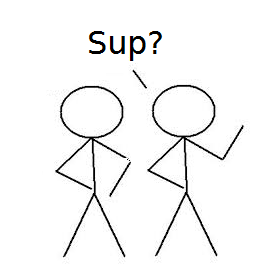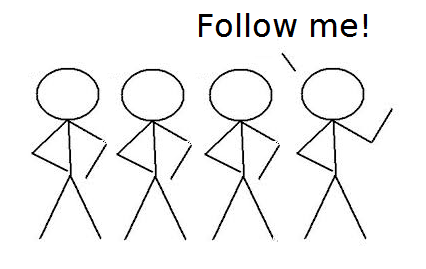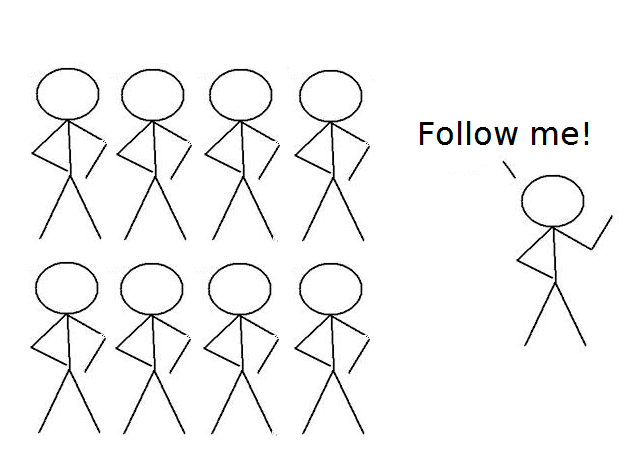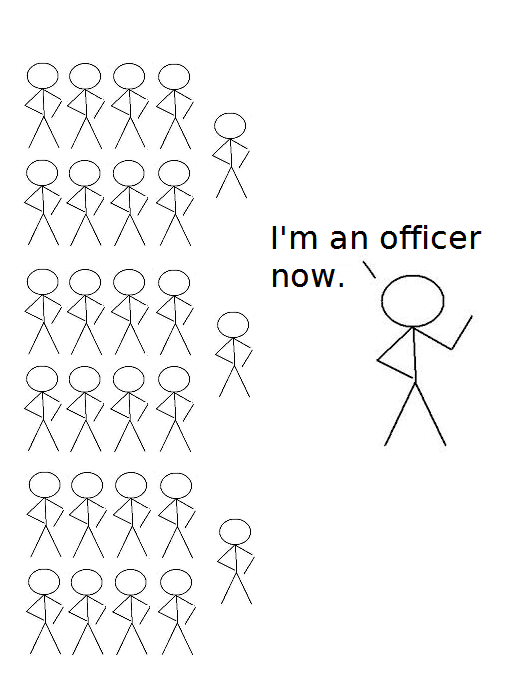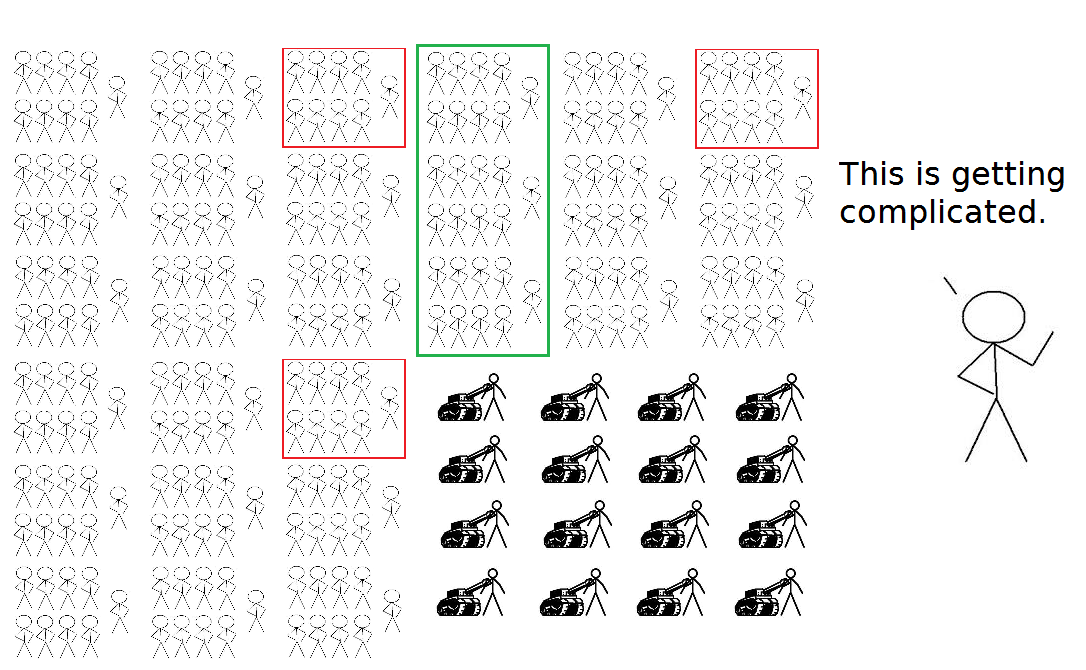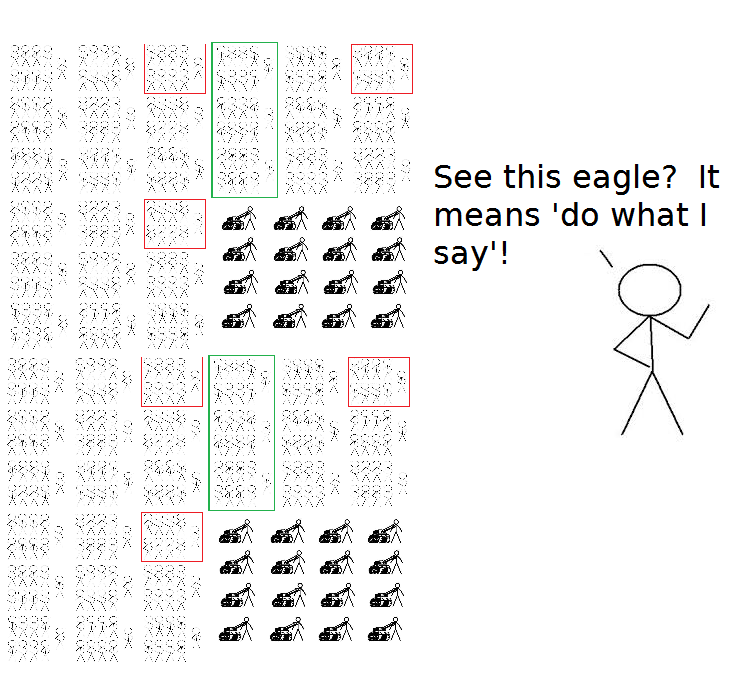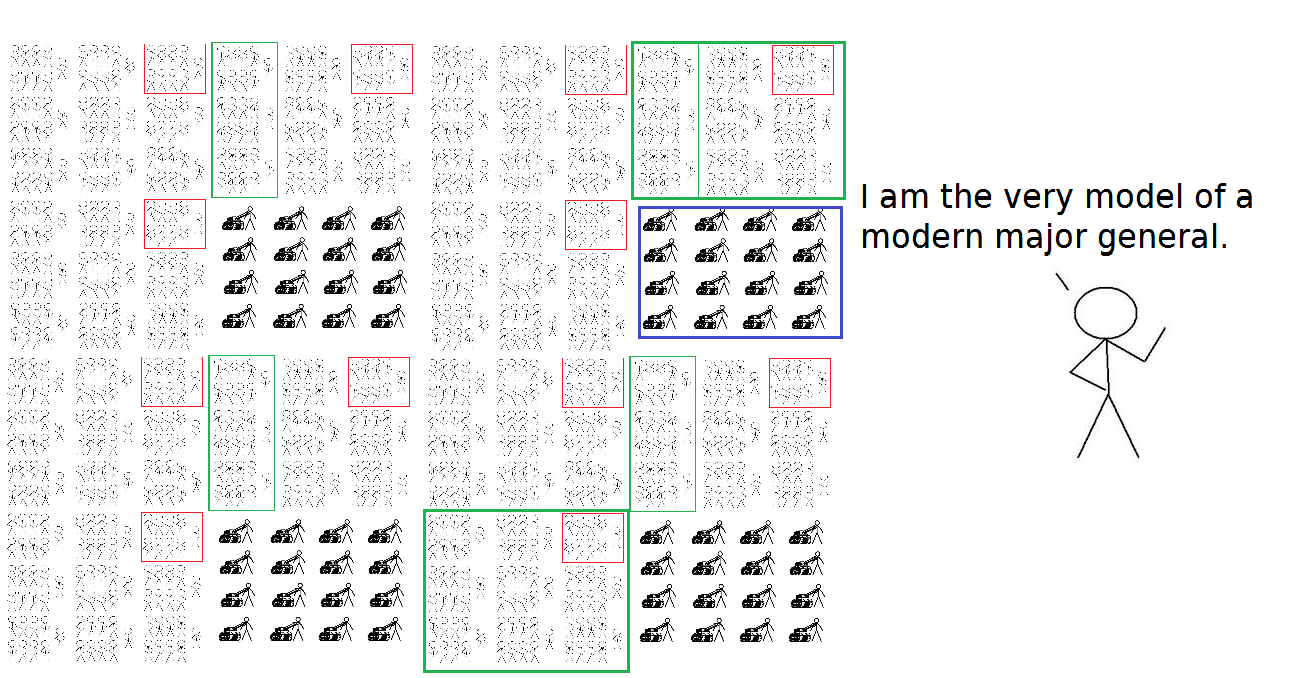There seems to be a lot of confusion on this issue, so I want to lay it out here. Before we go any farther in Darwin’s Doubt.
Many people seem to be wondering where the higher orders of life come from. Where do the phyla come from? They must have appeared out of thin air in the Cambrian explosion. No, they didn’t. It looks that way to us, because have the benefit of seeing the last 550 million years of life (or, at least, parts of it). We also constructed a taxonomy system based on a few species that are alive today and have spent the last 280 years trying to cram everything on Earth into that system.
Now, I’m going to teach by an analogy. This is not the argument, it’s an illustration to help you see what I mean.
Meet Bill.
Bill is going to help us out by joining the army.
Yep. Don’t worry, Bill. I’m sure you’ll do fine.
Soon after joining our newly forming army, Bill is joined by another recruit.
Two people do not an army make, so we need a few more. Fortunately for our hero, he’s been in the army the longest, so he gets the promotion to lead the newly developed fire team. He’s now a corporal, in charge of three of guys.
Still, four guys would get lost in a bar fight. We need an army, so we get five more people and for a squad. Bill, because of excellent 4 seconds of work, gets another promotion. Now, he’s a sergeant.
Now, we’re getting somewhere. They could almost defend a small warehouse from a group of boy scouts. We get a few more guys, enough to form a couple of squads and put them together into a platoon.
Yep, our buddy Bill has been promoted to second lieutenant. Well done, Bill. Those 27 guys are all different. But they are very similar in that they are all in Bill’s platoon. Pick anyone of them at random and they will have the characteristic of being in Bill’s group. There are three squads here, 1st, 2nd, and 3rd, squad. Each squad still has two fire teams. So a guy might be in fire team A, 2nd squad, Bill’s platoon. Another guy might also be in fire team A, 2nd squad, Bill’s platoon. Some other guy might be in fire team B, 1st squad, Bill’s platoon.
It’s the hierarchical organization that makes army’s work. Each guy knows what group he belongs to.
There have been a few movies about platoons, but that’s still not a very big army. What if we add a few more platoons and promote Bill to captain?
This is Bill’s company. It’s got a lot of troopers in it. Now, I’ve highlighted one of the squads in red, because it’s a special squad. It’s called a “heavy weapons” squad. It’s very different from the other squads. They have some different training and different equipment. If Bill’s company has to fight tanks, these guys are who he’ll call.
Now Bill is a lieutenant colonel and he commands a battalion. A battalion it a large and powerful force. Bill’s battalion even has some integral armor units (tanks), so he can do a lot more. That green platoon is another specialized unit he acquired when he got promoted. That’s a recon platoon. They were trained to be sneaky, to be good observers, and snipers. Bill can now control a front of several kilometers in favorable terrain.
Now Bill is a colonel. He has two battalions (called a regiment).
It only gets better from here.
Now Bill commands a division. He’s got several tank companies, two entire recon company (in green) and an integral artillery unit (the tanks in blue).
Thanks Bill. Let’s use our power for peace shall we?
What does all this have to do with biology and taxonomy.
Each one of these pictures represents a layer in a hierarchy. When we started, we had no idea who would be in charge of the division. Sure, we could guess. But you probably had no idea that Bill’s division would have sniper-scouts, tanks, artillery, heavy-weapons groups, etc. Once you get to the division size, you generally also get a lot of non-combat military people (supply, communication, MPs, etc).
This is how we get new large groups in biology. Remember the Linnaean system? Kingdom, Phylum, Class, Order, Family, Genus, Species (easily remembered by the phrase King Phillip Came Over For Good Sex*).
We’re looking at the history of life on Earth backwards because we started with the Linnaean system and then tried to fit everything into it. Which is fine, but it was never, ever intended to show evolutionary history of an organism. Evolution hadn’t even been thought of when Carl Linnaeus started trying to organize life into groups.
So, looking at Bill’s division. It’s obvious to see how each person is a part of a division, a regiment, a battalion, a company, a platoon, a squad, and a fire team. But it wasn’t obvious when we started building the army.
Evolution started with one species. Over time, part of the population of that species drifted apart and became another species. Well, now we have two species, we need a container because those two species are pretty closely related, but the are different. Let’s call it a genus. Over some time a few more species formed. Now, we’re to the level of Bill’s fire team.
At some point, and it is, almost by definition, an arbitrary point, we can decide that there’s another genus (fire team). It’s arbitrary because life isn’t discrete parts, it’s a continuum. So we decided that a couple of species are more closely related to each other (one fire team) than the other group of species (the other fire team). Now we have two genera… and we can make a bucket to put those them in. Let’s call it a family (Bill’s squad).
Now, let’s repeat this with a bunch more species… that we eventually classify into a bunch more species and genera and we’ll need another family to put them in. With two families, we need another, higher level bucket to put them into, so we form an order (platoon).
Now remember, and this is very, very , very important (so please forgive me yelling)…
ALL of this happens ONLY at the species level.
There is NOTHING going on here EXCEPT the formation of new species. And this is where the creationists are misguided (or misleading). Every taxonomic group above species is purely made up. We decided that X trait means that all species that have that trait are in x group (be it a genus, family, order, class, phylum, or kingdom).
But the actual forming of those larger groups are only because new species keep forming. We kept adding guys to our army. Those are the species.
I cannot express properly (without seeming insane) how vitally important this concept is.
Most people, and all creationists that I’ve dealt with, have it completely backwards. They think some animal formed (kingdom) and it split into a couple of groups (phyla) and then those split into smaller and smaller groups until we have the species that we find today or in the fossil record.
Again, we’re looking at it backwards because of Linnaeus. That’s why the majority of biologists talk about evolution through the use of cladograms like this one.

I’ve used this one before.
Looking at the top, Felis catus and F. silvestris are both unique species. But you see that number 12 just at the branch that became those two species? That was ALSO a species and it was likely different from both F. catus and F. silvestris. Although most felid researchers think that F. catus is a daughter species of F. silvestris, so it’s possible that that species at 12 is still extant.
The species at 11 probably isn’t extant, but it was a species. An offshoot population became F. silvestris and another offshoot population (or the original) became the group that led to the F. libyca and F. bieti. But it was a species at some point.
We keep going back until we get to 7 which separates the Felis genus from leopard cat (not leopards) group… and here we see where the Linnaean system screws us up, because the taxonomic names we’ve given to species don’t actually match their evolutionary relatedness. Anyway, the species that was 7 wasn’t any of the species that evolved from it. It was a completely separate species. That species divided into two daughter populations one of which led to the Felis species and the other ended up in the leopard cat grouping.
OK, I’ve hammered enough on this. If I’m still not clear, please let me know and I will try another route.
ADDED:
So, when a creationist asks “where did the phylum come from”, the answer is… we made it.
I hope by the use of the analogy and the cladogram than everyone can see that the higher orders of life only appear after a large number of speciation events (like millions). Until there are so many species that there are significant differences among them, higher orders won’t appear because the species are still very similar.
______________________________
* Yes, I taught my students this phrase. They knew the order of taxonomy.



